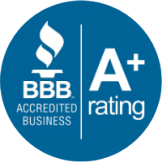Long Island Roofing: Article About The Basics Of Low-pitch Roofing
A built-up roof, or BUR, is constructed by layering numerous thin, industrial-grade felt materials over an existing roof deck. An application of bitumen, or asphalt, ensures the substrates bond together and form a tough coating that resists the passage of water while maintaining its overall shape and durability. Additional surface coatings further protect the installation.
Question answered by an experienced Long Island roofing contractor: Where are layered installations appropriate?Layered roofing is usually installed on extremely low-pitch or flat roofs. It's often found in cities and other densely packed urban zones or on taller buildings that include structural oddities such as HVAC units and roof access hutches. Commercial facilities and multi-unit residences commonly employ BUR building techniques to create green roofs and other novel, energy-efficient installations.

Many commercial buildings include roofs that have extremely low pitches. While this certainly makes it easier to create large facilities without the high costs associated with huge angled surfaces, flat edifices present unique problems when it comes to laying down roofing.
Most shingles and tiles aren't compatible with low-pitched installation angles because they're not strong enough to support the weight of snow, ice and debris. As a result, people have been using layered solutions, such as built-up roofing, or BUR, since the mid-1800s. These materials are highly versatile because they can be customized to include specialty layers and surface coverings that make it easier to modify the characteristics of a commercial space.
BUR roofing is the most common type of compositional roofing we use at Long Island Roofing and Repairs Service Corp. It generally consists of at least three main layers, including a waterproofing layer that protects the building below, a stress support layer that keeps the roof strong and a top layer that protects the other roof components.
Although BUR roofing layers are generally held together using coal tar or asphalt, the different layers can be customized. For instance, base layers like solid, bitumen-coated fiberglass or bitumen-coated organics can be covered with similarly composed glass or organic felts that have been impregnated with asphalt or even advanced thermoplastic fabrics. Top surfacing layers often consist of gravel, small stones, emulsified asphalt or roll roofing.
Because there are so many differences between these different compositional materials, it's important to work closely with your roofer before making a choice.
A roofing professional from Long Island Roofing can answer any question you have about shingle roofs or architectural roofing.
For instance, BUR materials are often directly applied to concrete surfaces using heat adhesion, but this method is impossible with buildings that employ gypsum and many forms of insulation. In addition, some roof decking materials, such as cement fiber, require insulation that is mechanically attached.
Another interesting variant of low-pitch roofing, known as ballasted roofing, has only been around for a few decades, but it's extremely popular nonetheless. Like BUR roofing, ballasted installations are built up from successive layers, but instead of using bitumen pitch to hold the parts together, these roofs rely on the weight of the components themselves.
Layers of heavy stone known as ballast are used to hold down waterproof membranes, ventilation barriers, insulation, filters and other substrates. Since these roofs are loose laid, they can be assembled in sections, resulting in decreased labor costs and reduced construction times on large projects. As the pieces are installed, the membrane layers are simply sealed together to create an impermeable barrier.
One of the coolest aspects of ballasted roofs is that they open up a range of options that weren't even possible before. For instance, their loose stone surfaces are often covered with soil and plants to create green urban zones. The ballast stones can even be replaced with pavers that convert roofs into usable, welcoming spaces.









